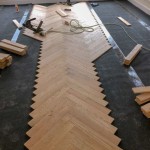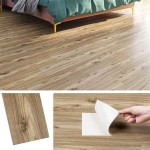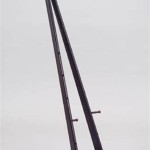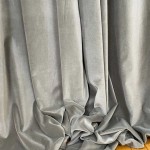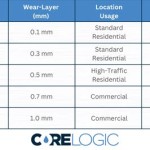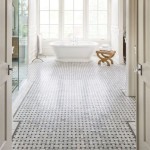Carbonized Strand Woven Bamboo Flooring: A Durable and Sustainable Choice
Carbonized strand woven bamboo flooring represents a modern and increasingly popular alternative to traditional hardwood. Its unique construction process, combined with the inherent properties of bamboo, results in a flooring material known for its exceptional durability, sustainability, and distinctive aesthetic. This article will explore the characteristics, manufacturing process, benefits, and considerations associated with carbonized strand woven bamboo flooring.
Understanding the Manufacturing Process
The creation of carbonized strand woven bamboo flooring is a multi-step process that significantly contributes to its strength and unique appearance. The process begins with the selection of mature bamboo stalks, typically Moso bamboo, known for its rapid growth and robust nature. These stalks are then processed into thin strips, which undergo a carbonization process to achieve the desired color and enhance the material's stability.
Carbonization involves heating the bamboo strips in a controlled environment, which alters the natural sugars (starches) within the bamboo. This process darkens the material, resulting in a rich, coffee-brown color often associated with "carbonized" bamboo. Importantly, carbonization affects the bamboo's hardness, making it slightly softer than natural or uncarbonized bamboo. The softened bamboo strips are then dried to a specific moisture content to prevent warping or cracking after installation.
Following carbonization, the dried bamboo strips are woven together, using a high-pressure adhesive. This "strand woven" technique involves compressing the strips in a random orientation, creating a dense and incredibly strong composite material. The random orientation of the strands contributes to the flooring's unique grain pattern, which is often characterized by a swirling, textured appearance, distinguishable from traditional bamboo flooring.
Once the woven strands are bonded, the material is pressed into planks, and a protective finish is applied. These finishes are typically multi-layered and designed to resist scratches, wear, and moisture. The quality of the finish is a crucial factor in determining the overall durability and longevity of the flooring.
Benefits of Carbonized Strand Woven Bamboo Flooring
Carbonized strand woven bamboo flooring offers a range of benefits that contribute to its growing popularity among homeowners and builders. These advantages include its exceptional durability, environmental sustainability, unique aesthetic, and relative affordability.
Durability: The strand woven construction process creates a flooring material significantly harder and more durable than traditional hardwood, and even harder than standard bamboo flooring. Its high density makes it resistant to dents, scratches, and wear, making it suitable for high-traffic areas such as hallways, living rooms, and kitchens. This durability translates to a longer lifespan and reduced maintenance requirements compared to other flooring options.
Sustainability: Bamboo is a rapidly renewable resource, capable of reaching maturity in as little as five years. This rapid growth rate contrasts sharply with hardwoods, which can take decades to mature. Harvesting mature bamboo stalks does not harm the plant, allowing it to regenerate and continue growing. Furthermore, bamboo requires minimal pesticides and fertilizers, reducing its environmental impact. When responsibly sourced from well-managed bamboo forests, carbonized strand woven bamboo flooring represents a sustainable and eco-friendly flooring choice.
Aesthetic Appeal: Carbonized strand woven bamboo flooring offers a distinctive and modern aesthetic that complements a wide range of interior design styles. The rich, dark color and swirling grain pattern create a warm and inviting atmosphere. The unique visual texture of the flooring adds character and visual interest to any space. The consistent color throughout the plank also helps to hide scratches better than some hardwood alternatives.
Affordability: While pricing can vary depending on the manufacturer, quality, and location, carbonized strand woven bamboo flooring is generally more affordable than comparable hardwood flooring options. This cost-effectiveness, combined with its durability and longevity, makes it a financially attractive choice for many homeowners.
Installation Considerations for Carbonized Strand Woven Bamboo Flooring
Proper installation is crucial to ensuring the long-term performance and appearance of carbonized strand woven bamboo flooring. While some experienced DIYers may be able to install the flooring themselves, professional installation is generally recommended to avoid potential problems.
Acclimation: Like any natural flooring material, carbonized strand woven bamboo flooring needs to acclimate to the environment in which it will be installed. This involves leaving the flooring in the room for several days prior to installation to allow it to adjust to the room's temperature and humidity levels. Proper acclimation prevents excessive expansion or contraction after installation, which can lead to gaps, warping, or buckling.
Subfloor Preparation: A smooth, level, and dry subfloor is essential for a successful installation. Any imperfections in the subfloor can telegraph through to the finished flooring, creating uneven surfaces or potential damage. The subfloor should be thoroughly cleaned and leveled, and any necessary repairs should be made prior to installation.
Installation Method: Carbonized strand woven bamboo flooring can be installed using various methods, including gluing down, floating, or nailing. The choice of installation method depends on the specific product, the subfloor material, and the homeowner's preferences. Gluing down provides the most stable and permanent installation, while floating allows for easier installation and potential removal. Nailing can be used on wooden subfloors, but it is less common for strand woven bamboo due to its density.
Moisture Considerations: Bamboo is a natural material that is susceptible to moisture damage if exposed to excessive humidity or water. It is crucial to ensure that the subfloor is dry and that the room is properly ventilated to prevent moisture buildup. In areas prone to moisture, such as bathrooms or basements, it is recommended to use a moisture barrier underlayment.
Maintenance and Care of Carbonized Strand Woven Bamboo Flooring
Maintaining carbonized strand woven bamboo flooring is relatively straightforward, requiring regular cleaning and preventative measures to protect the finish and prevent damage.
Regular Cleaning: Routine cleaning is essential to remove dirt, dust, and debris that can scratch or dull the finish. Regular sweeping or vacuuming with a soft brush attachment is recommended. For deeper cleaning, use a damp mop with a pH-neutral cleaner specifically designed for bamboo flooring. Avoid using excessive water, harsh chemicals, or abrasive cleaners, as these can damage the finish.
Preventative Measures: Taking preventative measures can help to protect the flooring from scratches, dents, and wear. Use area rugs in high-traffic areas and under furniture legs to prevent scratching. Avoid wearing shoes with cleats or high heels, as these can dent the flooring. Clean up spills promptly to prevent staining or water damage.
Refinishing: Over time, the finish on the flooring may wear down, requiring refinishing. Carbonized strand woven bamboo flooring can typically be refinished multiple times, extending its lifespan. However, it is important to consult with a professional flooring contractor to determine the best refinishing method for the specific product.
In conclusion, carbonized strand woven bamboo flooring offers a compelling combination of durability, sustainability, aesthetic appeal, and affordability. Its unique manufacturing process and inherent properties make it a viable alternative to traditional hardwood flooring, suitable for a wide range of applications and design styles. By understanding the manufacturing process, benefits, installation considerations, and maintenance requirements, homeowners and builders can make informed decisions about incorporating this sustainable and durable flooring option into their projects.

Strand Bamboo Carbonized Solid Smooth Select 9 16 X 5 1 4

Strand Woven Bamboo Flooring Natural Carbonized Tiger

Strand Woven Bamboo Flooring Natural Carbonized Tiger

Lock And Fold Strand Woven Bamboo Flooring

Solid Brushed Carbonised Strand Woven 135mm Uniclic Bona Coated Bamboo Flooring 1 5m² The Company

Carbonized Solid Strand Woven Bamboo Flooring Caramel 1850x96x14mm

Handscraped T G Carbonized Solid Strand Woven Bamboo Flooring Floor Made In Com

Wood Floors Plus Clearance Strand Bamboo Engineered Carbonized Smooth Click 9 16 Inch X 4 31 26 Sf Ctn

Jeedeson Solid Carbonized Strand Woven Bamboo Flooring Arbonized For Extreme Durability 5 2 W X 36 22

Carbonized Solid Strand Woven Bamboo Flooring Caramel 1850x96x14mm

